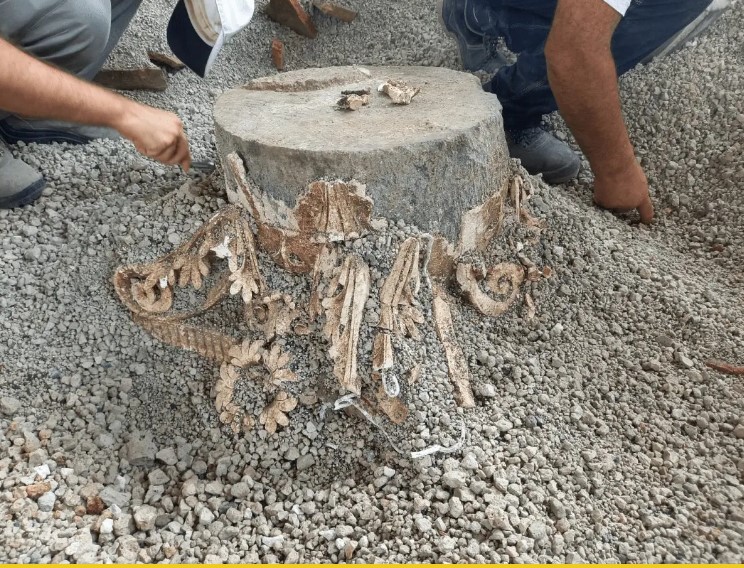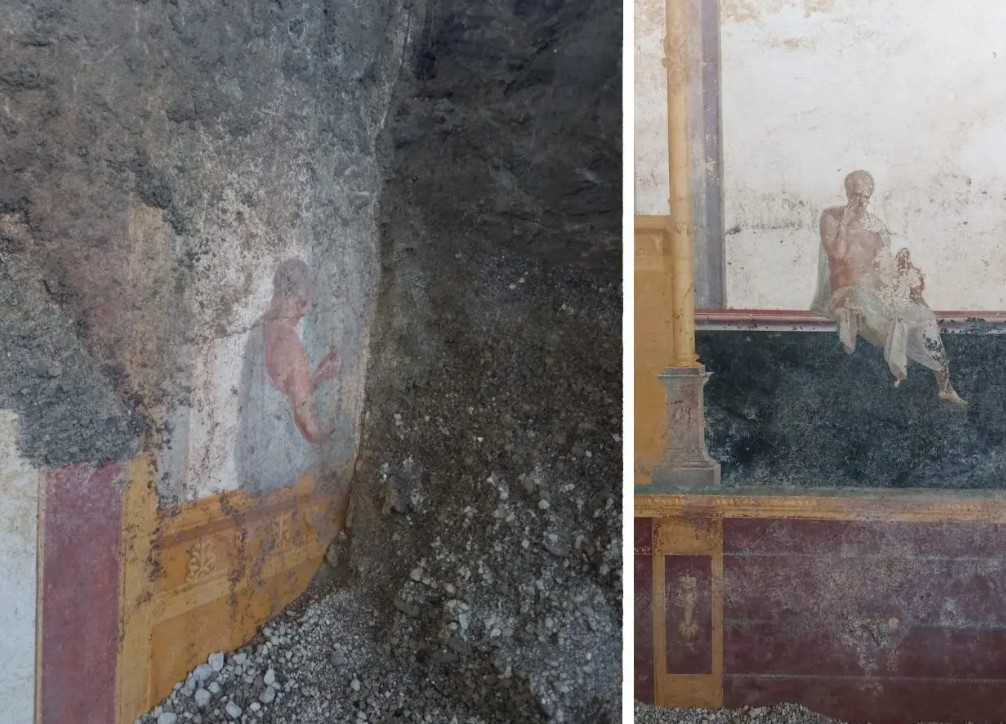Uncovering the Last Moments Before Vesuvius Eruption at Villa San Marco
Archaeologists conducting excavations at Villa San Marco, an opulent Roman villa near Stabiae, are shedding new light on the final moments before the catastrophic eruption of Mount Vesuvius. Located on the Bay of Naples, Stabiae was buried, much like Pompeii and Herculaneum, under thick tephra and ash during the devastating AD 79 eruption. Recent excavations at the expansive Villa San Marco have revealed fascinating insights into its building phases and layout, offering a glimpse into the villa’s lavish lifestyle before the volcanic disaster.
The Rich History of Villa San Marco:
Villa San Marco, an impressive Roman villa complex covering over 11,000 square meters, was originally constructed during the Augustan Age. The focal point was a tetrastyle Ionic atrium. Subsequent expansions, during the Claudian period, incorporated a scenic garden and a swimming pool enclosed by a three-sided portico adorned with spiral columns.
Revelations from Recent Excavations:
Intriguing discoveries emerged during the ongoing excavations that began in March 2023. The team excavated the end part of the upper portico, revealing well-preserved paintings featuring seated figures and large sections of collapsed walls. Buried under lapilli tephra, the paintings and a flight of spiral columns were miraculously preserved.
Reconstructing the Villa’s Final Hours:
The stratigraphies of lapilli and collapses, along with the sequence of pyroclastic flows, offer valuable clues in reconstructing the villa’s final hours. Despite the tragic destruction, the excavations unveil the villa’s opulence through vibrant paintings, intricate stuccos, exquisite capitals, and lavish coatings on columns and roofs.
Understanding the Layout:
The villa’s layout underwent significant changes due to expansions. The main entrance, now buried, once opened into a porticoed courtyard leading to the tablinum. From there, visitors could access the tetrastyle atrium, leading to four small cubicula. Additionally, the thermal baths’ alignment deviated from the main axis, connected to the pre-existing street in front of the structure.

Vesuvius’ Impact on Stabiae:
The eruption of Mount Vesuvius had devastating consequences, including the death of Pliny the Elder, who was at Stabiae during the eruption. However, many of the town’s inhabitants were spared and later resettled. The rediscovery of Villa San Marco provides a fascinating insight into the resilience and luxury that characterized Stabiae’s rebirth after the cataclysmic event.
Conclusion: The ongoing excavations at Villa San Marco are yielding remarkable insights into the luxurious lifestyle and architectural grandeur of a Roman villa before the eruption of Mount Vesuvius. Preserved paintings and architectural details offer a poignant glimpse into the villa’s last moments before the volcanic devastation. These findings contribute significantly to our understanding of ancient Roman life and the enduring impact of natural disasters on historical sites.
Header Image Credit : Pompeii Sites




